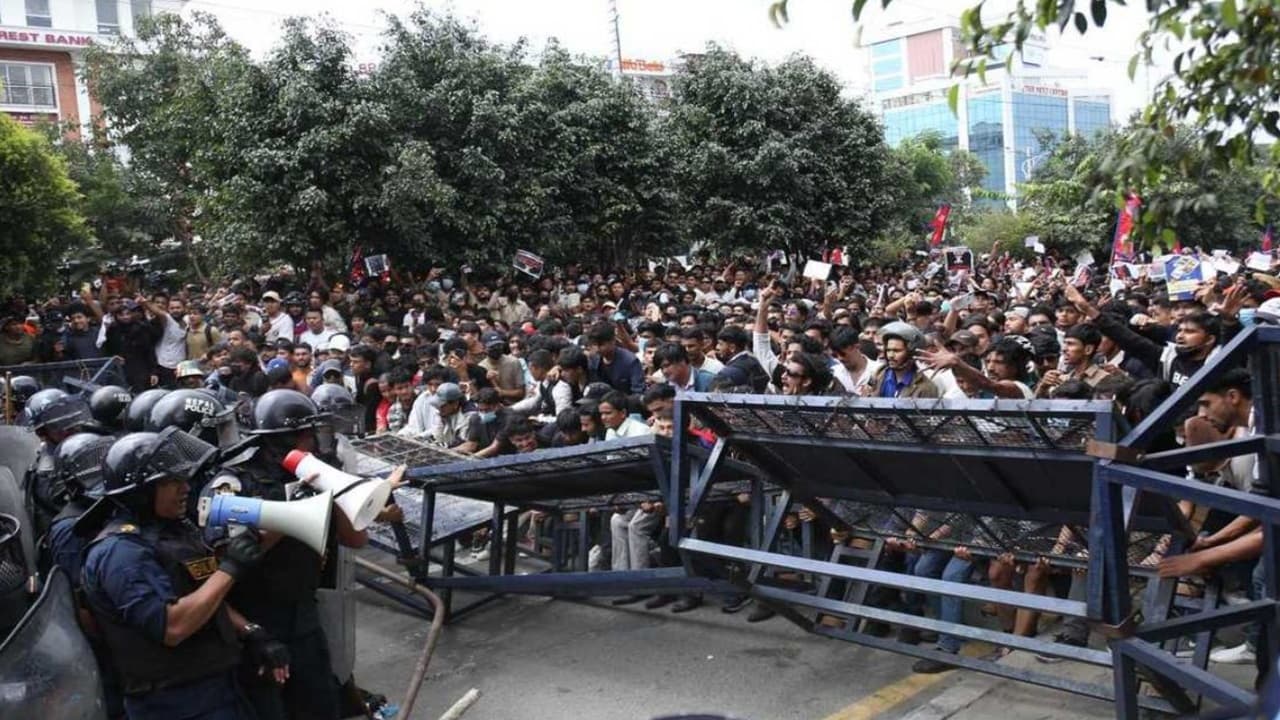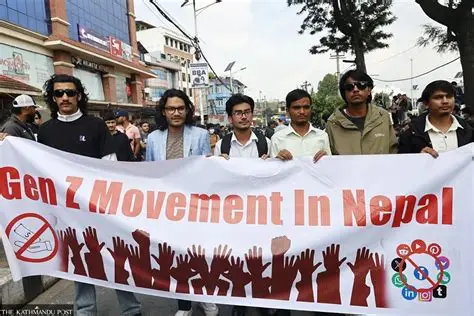KATHMANDU: Nepal is in the grip of one of its most turbulent political crises in recent years, as protests led primarily by Gen Z youth continue to spread across the country.
At least 19 people have been killed and more than 500 injured in violent clashes in Kathmandu and other major cities following the government’s decision to ban 26 social media platforms.
While the ban was the immediate trigger, analysts and observers stress that the unrest is not just about access to apps like Facebook, Instagram, WhatsApp, and YouTube. Instead, it reflects long-simmering anger over corruption, nepotism, economic inequality, and a political elite widely perceived as detached from the struggles of ordinary Nepalis.
Former Indian Ambassador to Nepal, Ranjit Rae, called the ban foolhardy but insisted the true drivers of the protests lie much deeper.
On September 8, Prime Minister KP Sharma Oli’s government announced a sweeping ban on major social media apps, claiming the move was necessary to curb misinformation, enforce tax compliance, and protect cybersecurity.

pictures of Nepal GenZ
Instead of reassurance, the ban ignited fury. For a generation that grew up online, social media platforms are not just communication tools but also avenues for business, activism, and self-expression.
Blocking them was widely seen as a direct attack on free speech and an attempt to silence dissent.
This was a foolhardy decision, Rae said. The government underestimated how much people, especially young Nepalis, depend on these platforms for their daily lives. But even without the ban, the anger was already boiling beneath the surface.”
Nepalis have long complained about the culture of corruption in government, but recent scandals have intensified public anger.
Successive administrations have been tainted by allegations of embezzlement, mismanagement, and backdoor deals that enrich politicians while ordinary citizens struggle with rising prices and unemployment.
Rae noted that widespread frustration in Nepal over corruption in high political offices” has become the core grievance fueling the protests.
pictures of ongoing Nepal protest
The protests have also been energized by growing resentment against political families whose children flaunt wealth and privilege online.
The Nepo Kids trend a term borrowed from global debates about nepotism in entertainment and politics went viral in Nepal after videos and photos surfaced of politicians’ children showing off luxury cars, designer clothes, and foreign vacations.
For many struggling young Nepalis, these displays symbolized a political system rigged for the elite, while millions face poor infrastructure, low wages, and limited opportunities.
Adding fuel to the fire, widespread rumours suggested that Oli’s Communist Party of Nepal (UML) and Sher Bahadur Deuba’s Nepali Congress struck a “grand coalition” not out of principle, but to evade corruption probes.
The rumour in Nepal was that this coalition had been formed because leaders of both parties were under investigation for corruption by the previous government. So, to stop those investigations, they formed this coalition, Rae explained.
This perception of political collusion has reinforced the belief that the ruling elite protect each other while ignoring public demands for accountability.
Perhaps the most potent driver of unrest is Nepal’s economic malaise. Nearly 5,000 young people leave Nepal daily to seek employment abroad, primarily in Gulf states and Malaysia. Remittances sustain the economy, but the mass exodus underscores the government’s failure to create meaningful opportunities at home.
This brain drain has left Gen Z Nepalis frustrated. They see no path to building a stable future in their own country, and the social media ban became the spark that set off an already volatile situation.
This uprising is often described as a Gen Z movement digitally savvy, bold, and unwilling to tolerate the corruption and nepotism of their leaders. What makes it remarkable is its leaderless structure.
Unlike traditional political movements tied to parties, the protests are coordinated through informal networks, word of mouth, and underground digital channels that bypass the ban.
“Young people feel their voices have been ignored for too long. They are not afraid to take risks, and this is their way of forcing the political class to listen,” a Kathmandu-based analyst said.
Though leaderless, the movement has drawn prominent figures. Balen Shah, the mayor of Kathmandu, has emerged as one of the most visible supporters. Popular among the youth for his anti-establishment stance, Shah’s involvement has given the protests greater legitimacy.
The movement has also attracted unexpected allies from civil society. The former Chief Justice of Nepal and the ex-head of the Nepal Electricity Authority have joined demonstrators, signaling that discontent is not confined to the streets but cuts across professional and political classes.
At its heart, however, the protests are driven by ordinary people students, workers, and the unemployed who feel excluded from a system dominated by elites.
Crowds in Kathmandu, Pokhara, Butwal, and Birgunj have demanded not just the reversal of the social media ban, but a complete overhaul of governance to make it more transparent, accountable, and responsive.
In response to escalating unrest, the government has imposed curfews in several cities and deployed the army to contain violence.
Despite these measures, demonstrations have continued, with protesters clashing with police and security forces.
The situation reached a turning point with Prime Minister KP Oli’s resignation. Rae expressed hope that this development could pave the way for calm.
I just hope that things stabilise. Nepal is India’s neighbour with open borders, and peace there is critical. The mayor of Kathmandu has appealed for calm, urging people not to destroy property.
Hopefully, with Oli stepping down, there will be movement toward stability and calm, Rae said
The protests have revealed a generational shift in Nepal’s politics. Gen Z demonstrators are not merely calling for policy changes but demanding structural reforms to end the culture of corruption, nepotism, and elite privilege.
Observers warn that unless Nepal’s leaders address these grievances seriously, the crisis could deepen. This is not just about social media, one political commentator noted. It is about the failure of the entire system to deliver for its people.
For now, Nepal faces a delicate balance. The resignation of Oli has removed one flashpoint, but the anger that fueled the uprising remains unresolved. Whether the political establishment
chooses to listen or repeat past mistakes will determine if Nepal can move toward stability or sink further into turmoil.




